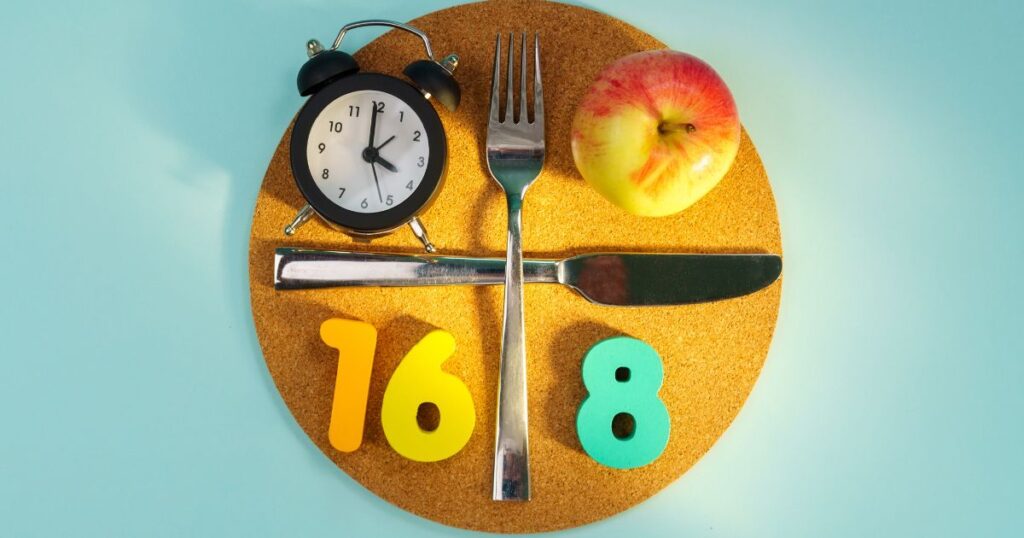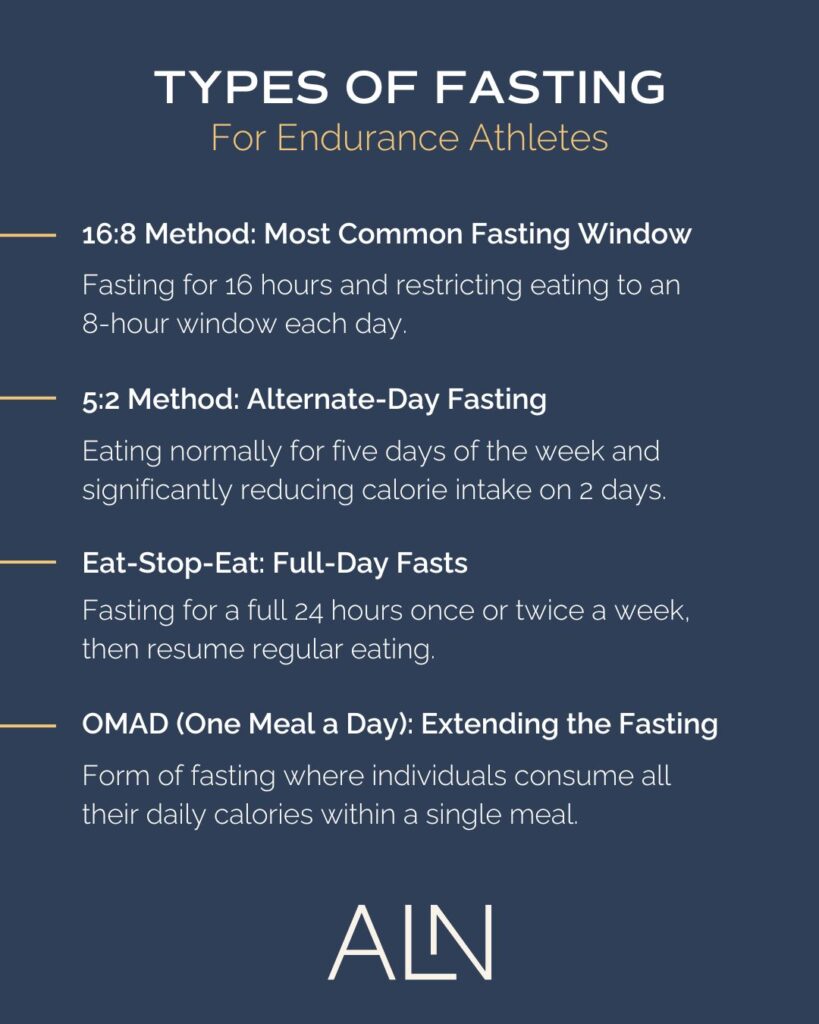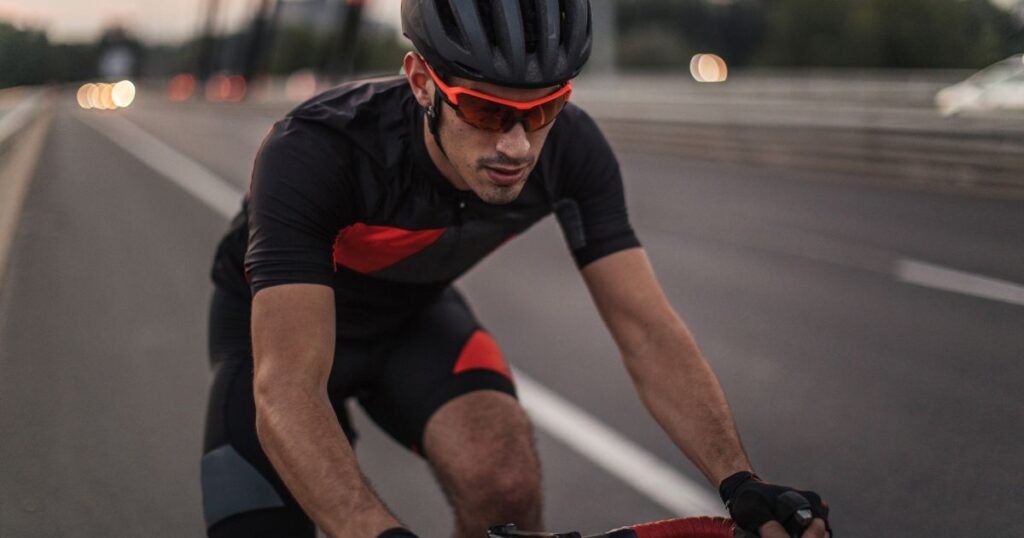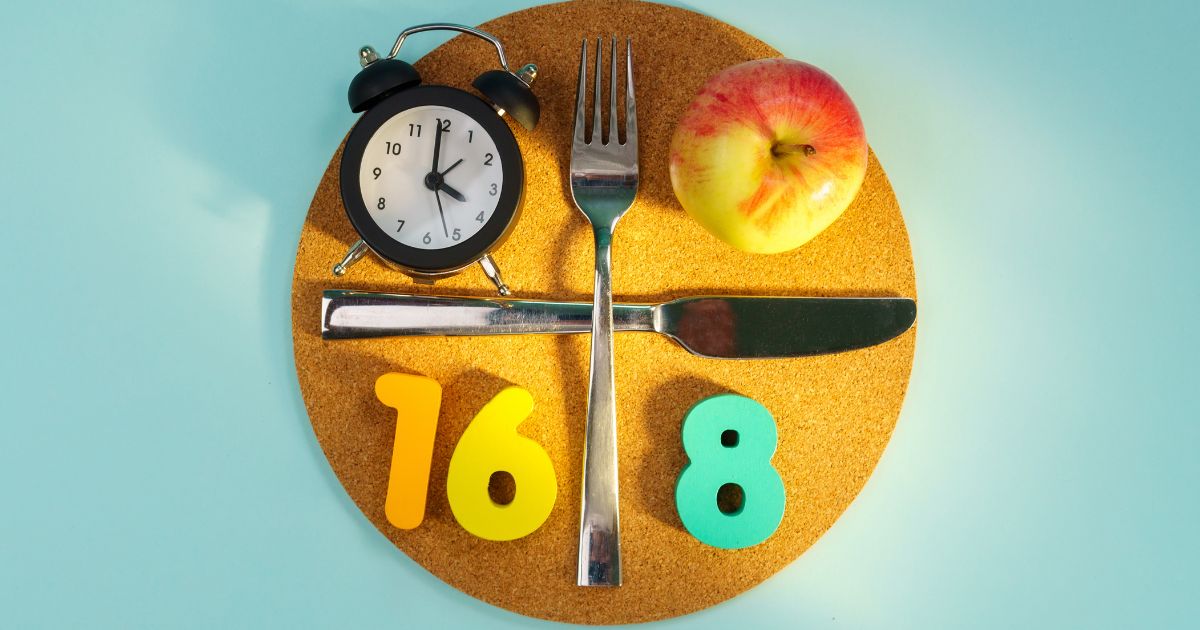Level Up Your Nutrition Game With Our Freebies
Alex
I provide nutrition coaching for endurance athletes to improve performance and body composition through a simple and flexible eating style.
Hi, I'm
ATHLETE EATING GUIDE →
LEARN MORE →
ATHLETE GROCERY SHOPPING GUIDE →
10-DAY PROTEIN-PACKED SAMPLE MEAL PLAN
READY TO FUEL?
incredible value!
The fueling guide bundle serves as your one-stop-shop for strategies to fueling before, during and after your workouts.
What’s the 411 on intermittent fasting for endurance athletes? Intermittent fasting has gained significant popularity due to its potential benefits for weight loss. It’s also trending among the endurance athlete community in the search of achieving a leaner body composition.
If you’re considering or already incorporating intermittent fasting into your nutrition regimen, I want to provide you with an understanding of the basics and science behind intermittent fasting for endurance athletes so that you can make an informed decision.
Understanding the Basics of Intermittent Fasting

Let’s first walk through the fundamental principles of intermittent fasting.
Intermittent fasting involves alternating cycles of eating and going without food across various meal timing schedules.
There are four common approaches to intermittent fasting, such as the 16:8 method, the 5:2 method, the Eat-Stop-Eat approach, and the OMAD (One Meal a Day) strategy.
Types of Intermittent Fasting for Endurance Athletes
16:8 Method: The Most Common Fasting Window
The 16:8 method, also known as the Leangains protocol, is one of the most popular forms of intermittent fasting. It involves fasting for 16 hours and restricting eating to an 8-hour window each day. This method typically involves skipping breakfast and consuming meals within the designated eating window.
It is very important to prioritize nutrient-rich foods and maintain a balanced diet during the eating window. Endurance athletes would also want to time their training to be during the 8-hour window to best support fueling the workout.
5:2 Method: Alternate-Day Fasting
The 5:2 method involves eating normally for five days of the week and significantly reducing calorie intake to around 500-600 calories on the remaining two non-consecutive days. This approach, also known as alternate-day fasting, allows individuals to have regular eating patterns most of the week while incorporating intermittent fasting on specific days.
However, it is essential to ensure that the reduced-calorie days are balanced with nutritious meals and snacks, and that physical activity is keep minimal on these days.
Eat-Stop-Eat: Full-Day Fasts
The Eat-Stop-Eat method involves fasting for a full 24 hours once or twice a week. This approach requires individuals to abstain from food for an entire day and then resume regular eating the following day.
However, this method would be very challenging, especially for endurance athletes, to accomplish a full-day fast. Additionally, there is a potential for some binge-eating behavior when breaking the fast.
OMAD (One Meal a Day): Extending the Fasting Period
OMAD, or One Meal a Day, is a form of intermittent fasting where individuals consume all their daily calories within a single meal, typically within a one-hour eating window. This method involves fasting for the remaining 23 hours of the day.
OMAD can be an intense fasting approach and is very hard on a person’s gut and digestive system. I could see this potentially leading to GI issues happening during exercise. OMAD would also require careful planning, but realistically it seems unattainable to receive all your body’s necessary nutrition in one meal to support an endurance athlete lifestyle and a strong, lean body composition.

The Role of Body Composition and Weight Management

Body composition and weight management are often at the forefront of an athlete’s mind who is striving to optimize their performance.
Some research suggests that intermittent fasting can influence body composition by facilitating fat loss and supporting weight management goals.
However, this is likely due to the fact that when you’re eating in a smaller window, you’re more inclined to eat less food. Therefore, you’re putting yourself in a caloric deficit needed to lose weight.
These same body composition benefits are often seen in athletes who reduce their discretionary calories and are mindful of their portion sizes.
Further, every athlete will respond differently in response to fasting. If you do decide to fast, you’ll want to tailor your approach to meet your specific schedule and needs.
Long-Term Sustainability and Health Considerations
While intermittent fasting may yield short-term benefits, it is crucial to assess its long-term sustainability and potential effects on an athlete’s overall health and well-being.
Further, it’s also essential to consider the feasibility of intermittent fasting for athletes, considering factors such as hormonal balance, menstrual health, and the impact on longevity. By evaluating these considerations, you can make informed decisions about incorporating intermittent fasting into your lifestyle.
Monitoring Performance and Adjusting Strategies
Tracking performance metrics during intermittent fasting is vital to ensure that you’re maintaining optimal energy levels, recovery, and endurance.
You’ll want to evaluate the impact of fasting on performance and explore strategies for fine-tuning nutrition plans based on individual needs. If you find that you’re overly tired or slow when intermittent fasting, you may want to keep this in mind.
Additionally, when you are in your eating window, you’ll want to ensure you’re getting the right amounts of protein and carbs that your body needs for muscle growth and repair.
By being mindful of these factors, you can make adjustments to your fasting strategies to maximize your athletic potential.
Potential Benefits of Intermittent Fasting for Endurance Athletes
Intermittent fasting experts claim that IF can have potential benefits for athletes. I’ve heard claims touted, such as improving insulin sensitivity, enhancing fat burning, and increasing endurance capacity.
As I talked about previously, one of the main benefits seen with intermittent fasting for endurance athletes is body composition changes. One review article found that athletes who do IF saw body comp benefits without a reduction in sports performance, though the sample sizes were small and varied.
In another 2019 study, the authors found no benefits for athletic performance with intermittent fasting.
As you can see, more long-term research on larger sample sizes needs to be done to draw a further conclusion.
Even further, some athletes report anecdotal evidence that they feel more mentally clear when intermittent fasting. It’s important to take these benefits with a grain of salt since every athlete is different!
Drawbacks and Challenges of Intermittent Fasting

As a dietitian, when considering any diet or nutritional trend, I don’t look at the potential drawbacks or benefits it would offer a single person. I consider all endurance athletes collectively as a whole. I think through the impacts it has on a person’s physical health, mental health, athletic performance, social life, lifestyle, finances and so much more.
Relationship With Food & Intermittent Fasting For Endurance Athletes
And one of the biggest drawbacks that I have found in intermittent fasting is its impact on athlete’s mental views and relationship with food. Disordered eating behaviors are rampant among the general adult population, including the athlete community, with many thanks to the diet culture that has conditioned and influenced our food and eating decisions.
Story time!
I had a call with a potential athlete client, a female runner, who was telling me how they do intermittent fasting and that there were times that she would fast for multiple days at a time (while running daily). The entire conversation was constant red flags. Her perception was that intermittent fasting was healthy, and I recognized that she was using it to mask a potential eating disorder. I kindly told the runner that I was not willing to take them on as a client.
I recommended that they look into working with health professionals who were experienced in eating disorders. I’m pretty sure in that moment I deeply offended her. But, months later she sent me a message saying “Thank you for that slap in the face”, and she needed to hear what she was doing was harmful to her health and she was working on getting into a better place.
Navigating Social Situations and Training Schedules
Intermittent fasting can make it hard to navigate social situations and accommodate training schedules. When you aren’t eating for large windows of the day, you may find yourself having to say no to more social events, including dinner or brunch with your friends.
It can also be difficult to plan your training regimen around your eating windows. As I mentioned above, if you have days where you’re eating significantly fewer calories, you probably won’t want to train on these days.
Adequate fueling during eating windows
One of the last challenges I’ll leave you with is when you’re shortening your eating window, you have to be a lot more intentional with your calorie intake. We know that athletes already have an increase in caloric needs.
When you’re forced to eat these calories spread out over a smaller eating window, it can make it more difficult. Some athletes may not meet protein and carb requirements if they’re consistently doing IF.
Underfueling can lead to poor athletic performance, and even more seriously, RED-S.
Intermittent Fasting for Endurance Athletes: The Role of Professional Guidance
Before you jump onto trends and diet plans such as intermittent fasting for endurance athletes, ensure you’re optimizing your performance nutrition with the basics and laying a good foundation for success.
If you are interested in trying IF, make an informed decision and keep track of your performance metrics.
However, it is crucial to approach intermittent fasting with caution, understanding the potential drawbacks and challenges. Fasting is definitely not for everyone- and isn’t necessary to reach your athlete goals.
Given the complexity and potential risks associated with intermittent fasting, seeking professional guidance from a registered dietitian or sports nutritionist is crucial. They can help you develop a customized intermittent fasting plan.
The ALN team is accepting new athletes into our 1:1 performance nutrition coaching program! Apply here today to learn more.
Alex
I provide nutrition coaching for endurance athletes to improve performance and body composition through a simple and flexible eating style.
Hi, I'm
LEARN MORE →
take the quiz!
Let's discover your Endurance Nutrition IQ
How well do you know your fueling? Answer these questions and let's see where your endurance nutrition knowledge is at!
Take the quiz
level up your nutrition game with these freebies
free downloadS
Protein-Packed 10-Day Sample Meal Plan
Athlete Eating Guide
Athlete Grocery Shopping Guide
1
2
3
Inspiration to fit 120 grams of protein into your day
Planning what goes on your plate
Putting the right foods in your grocery cart
